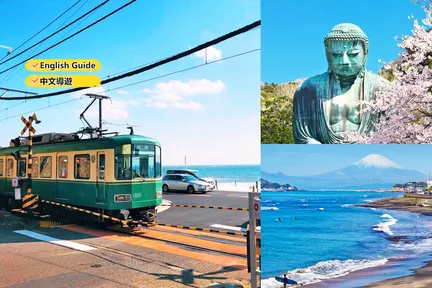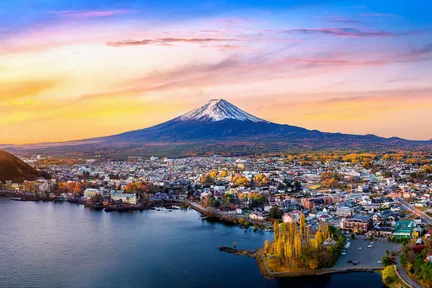Kotoku-in
The best of Kotoku-in
Bucket-list experiences
Make it a getaway
More to explore
Why people love Kotoku-in
Nearby places to go
FAQs about Kotoku-in
Is Kotoku-in Kamakura accessible for wheelchair users?
Can I bring my pet to Kotoku-in Kamakura?
Are there any photography restrictions at Kotoku-in Kamakura?
When is the best time to visit Kotoku-in Kamakura?
How can I get to Kotoku-in Kamakura?
What should I keep in mind when visiting Kotoku-in Kamakura?
What are the admission details for Kotoku-in Kamakura?
What to know before visiting Kotoku-in
Remarkable Landmarks and Must-Visit Sights
The Great Buddha of Kamakura
Prepare to be captivated by the awe-inspiring Great Buddha of Kamakura, a towering bronze statue that stands at an impressive 13.35 meters. This iconic figure, dating back to the 13th century, is not only a symbol of peace and enlightenment but also a testament to the resilience of history, having survived natural disasters like the 1498 tsunami and the 1923 Great Kantō earthquake. Step inside the hollow interior of this National Treasure for a unique experience that connects you with centuries of Japanese culture and spirituality.
Temple Grounds
Discover a serene escape at the temple grounds of Kōtoku-in, where tranquility and history blend seamlessly. As you pass through the entrance gate, guarded by the imposing Niō statues, you'll find yourself immersed in beautifully maintained gardens and historical structures. Don't miss the chance to see the 'Buddha's sandals' and other fascinating artifacts that add layers of intrigue to your visit. It's a perfect spot for reflection and a deeper understanding of the spiritual heritage of Kamakura.
Culture and History
Kotoku-in is steeped in history, offering insights into Japan's rich cultural tapestry. The temple grounds reflect centuries of Buddhist tradition and are a testament to the enduring legacy of Kamakura's spiritual heritage. The Great Buddha itself has inspired artists and writers, including Rudyard Kipling, who penned verses about it in his novel 'Kim'. The statue's survival through typhoons and a tsunami in the 14th and 15th centuries adds to its historical allure, making it a must-visit for those interested in Japan's rich cultural tapestry.
Local Cuisine
While Kotoku-in itself does not offer dining options, the surrounding area in Kamakura is known for its delightful local cuisine. Visitors can savor traditional Japanese dishes such as shirasu (whitebait) and Kamakura vegetables, offering a taste of the region's unique flavors. The area is known for its fresh seafood, traditional Japanese sweets, and unique dishes like shirasu (whitebait) rice bowls. Dining in Kamakura offers a delightful culinary experience that complements the spiritual journey.


![[Kamakura|Train Experience] Kamakura Great Buddha & Kamakura Tram Experience & Kamakura High School & Enoshima & Tsurugaoka Hachimangu Shrine & Komachi-dori Tokyo Kamakura Day Tour (Departing from Tokyo)](https://res.klook.com/image/upload/fl_lossy.progressive,w_432,h_288,c_fill,q_85/activities/jdbr66cp46dvy8ixfhgo.webp)
